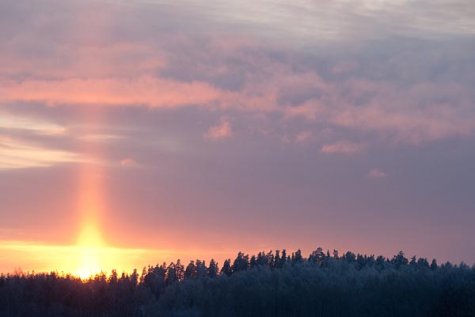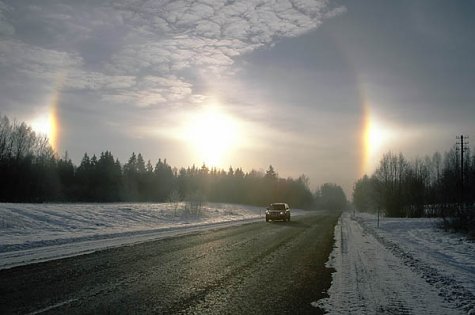Colder weather, sky lighting up
Photos: Arne Ader
Translation: Liis
Halo
It will be colder and sunnier towards the end of the week. It is worthwhile to look for halo phenomena too accompanying the heavenly light. A halo occurs when ice crystals reflect and refract the rays of the sun at a certain angle (often at an angle of 22 degrees), and a circle of light shafts appears in the sky.
Ice crystals float around in the layers of atmosphere close to the earth mostly only in winter weather; these crystals act as small glass prisms: a part of the rays is reflected, a part is refracted in the prism. The halo rings thus formed are either full or partial depending on the locations of the ice crystals.
Halos can be easily observed without equipment. Getting good photos of a large halo can be quite difficult, and in an only slightly over- or underexposed photo the halo can be completely missed.
A partial halo created when small clouds of ice crystals are at the crossings of arcs or circles is particularly splendid – a bright cross will show in the sky. Halos can make very differently shaped patterns that are difficult to explain.
Halo. Nõuni, Otepää uplands.










